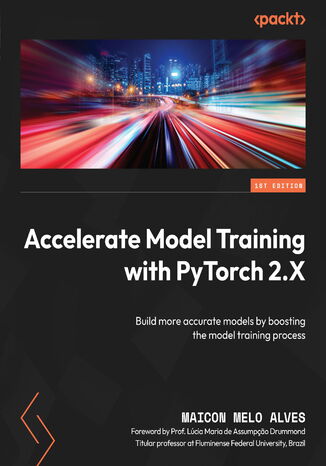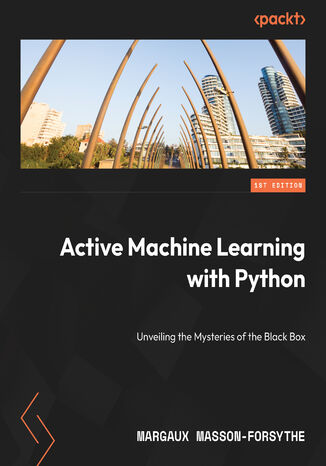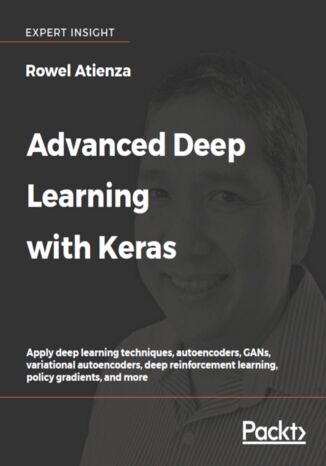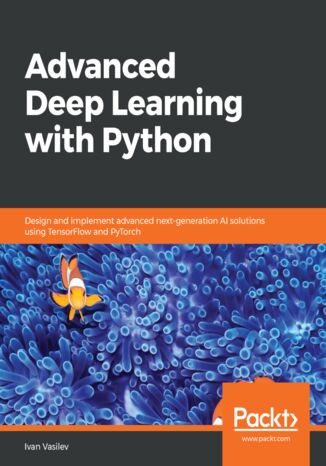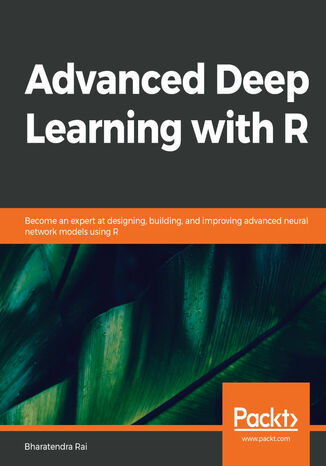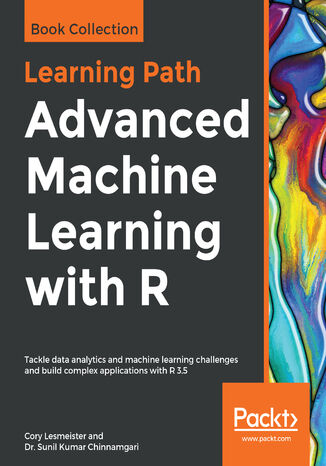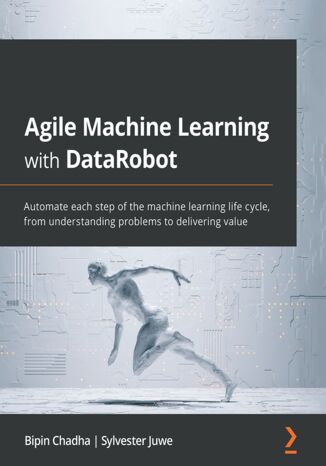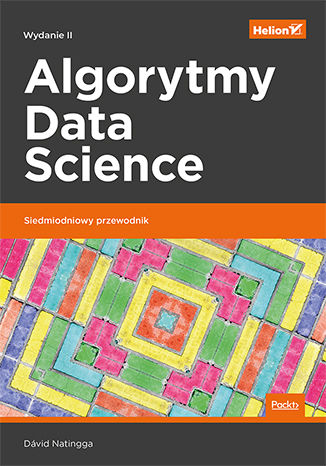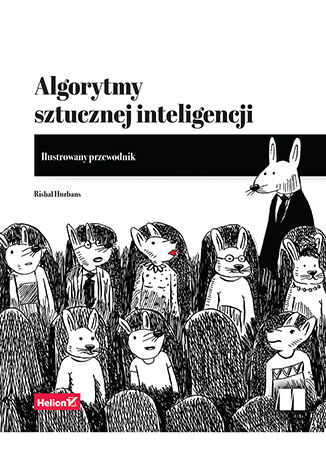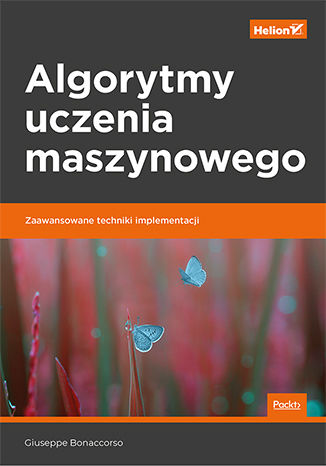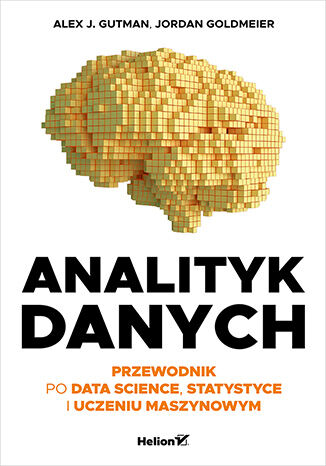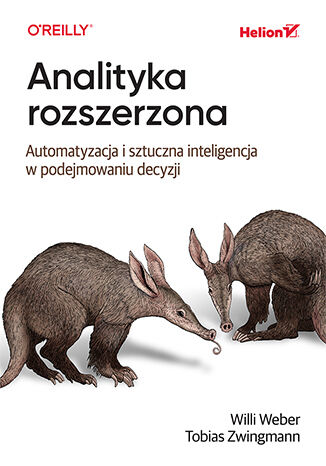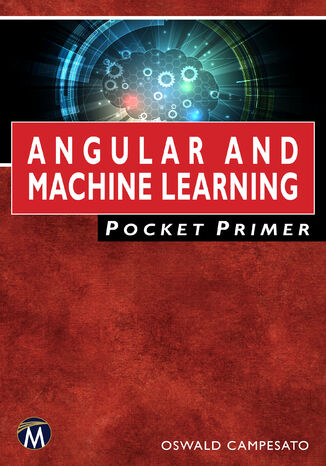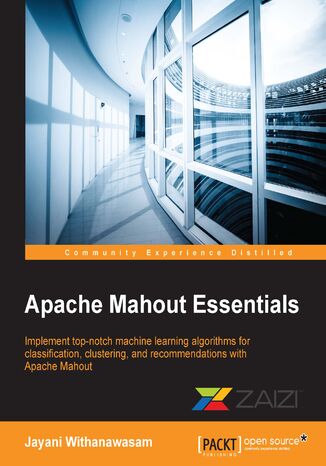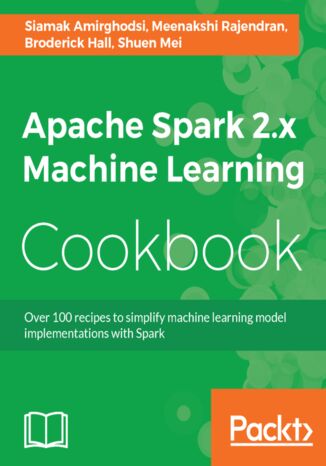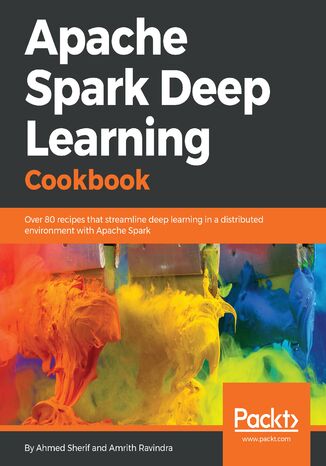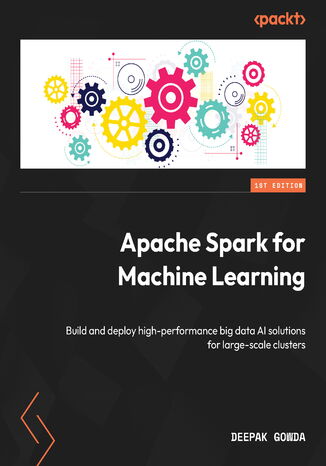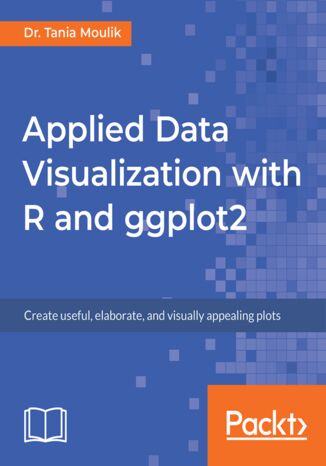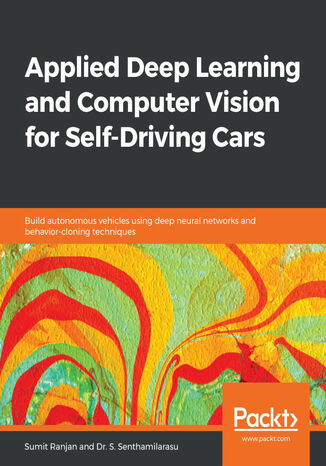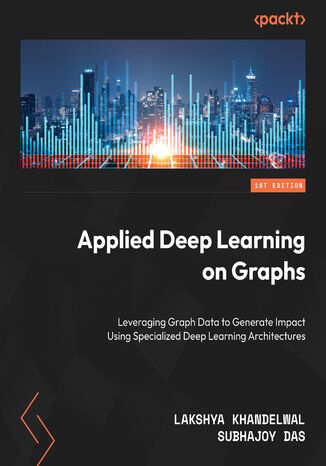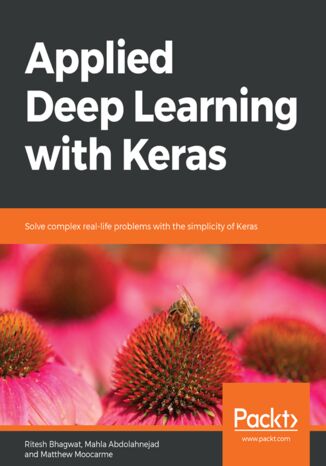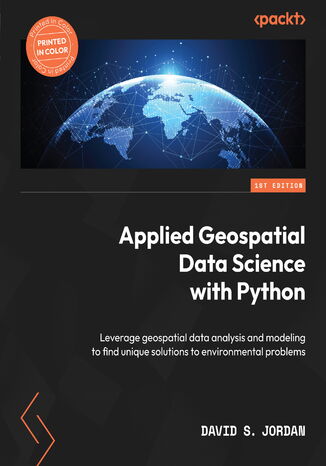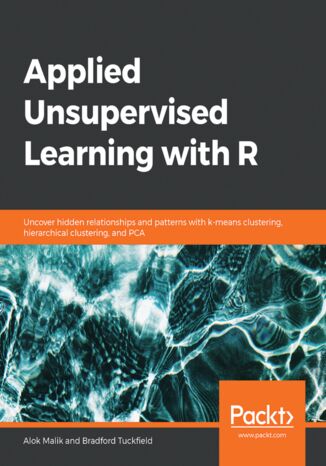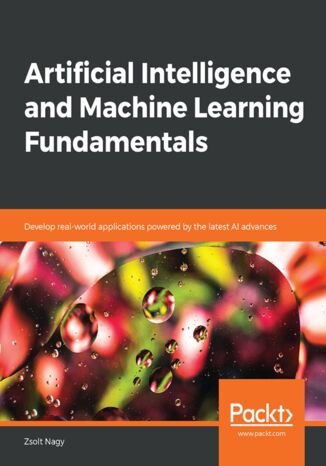Categories
Ebooks
-
Business and economy
- Bitcoin
- Businesswoman
- Coaching
- Controlling
- E-business
- Economy
- Finances
- Stocks and investments
- Personal competence
- Computer in the office
- Communication and negotiation
- Small company
- Marketing
- Motivation
- Multimedia trainings
- Real estate
- Persuasion and NLP
- Taxes
- Social policy
- Guides
- Presentations
- Leadership
- Public Relation
- Reports, analyses
- Secret
- Social Media
- Sales
- Start-up
- Your career
- Management
- Project management
- Human Resources
-
For children
-
For youth
-
Education
-
Encyclopedias, dictionaries
-
E-press
- Architektura i wnętrza
- Health and Safety
- Biznes i Ekonomia
- Home and garden
- E-business
- Ekonomia i finanse
- Esoterecism
- Finances
- Personal finance
- Business
- Photography
- Computer science
- HR & Payroll
- For women
- Computers, Excel
- Accounts
- Culture and literature
- Scientific and academic
- Environmental protection
- Opinion-forming
- Education
- Taxes
- Travelling
- Psychology
- Religion
- Agriculture
- Book and press market
- Transport and Spedition
- Healthand beauty
-
History
-
Computer science
- Office applications
- Data bases
- Bioinformatics
- IT business
- CAD/CAM
- Digital Lifestyle
- DTP
- Electronics
- Digital photography
- Computer graphics
- Games
- Hacking
- Hardware
- IT w ekonomii
- Scientific software package
- School textbooks
- Computer basics
- Programming
- Mobile programming
- Internet servers
- Computer networks
- Start-up
- Operational systems
- Artificial intelligence
- Technology for children
- Webmastering
-
Other
-
Foreign languages
-
Culture and art
-
School reading books
-
Literature
- Antology
- Ballade
- Biographies and autobiographies
- For adults
- Dramas
- Diaries, memoirs, letters
- Epic, epopee
- Essay
- Fantasy and science fiction
- Feuilletons
- Work of fiction
- Humour and satire
- Other
- Classical
- Crime fiction
- Non-fiction
- Fiction
- Mity i legendy
- Nobelists
- Novellas
- Moral
- Okultyzm i magia
- Short stories
- Memoirs
- Travelling
- Narrative poetry
- Poetry
- Politics
- Popular science
- Novel
- Historical novel
- Prose
- Adventure
- Journalism, publicism
- Reportage novels
- Romans i literatura obyczajowa
- Sensational
- Thriller, Horror
- Interviews and memoirs
-
Natural sciences
-
Social sciences
-
School textbooks
-
Popular science and academic
- Archeology
- Bibliotekoznawstwo
- Cinema studies
- Philology
- Polish philology
- Philosophy
- Finanse i bankowość
- Geography
- Economy
- Trade. World economy
- History and archeology
- History of art and architecture
- Cultural studies
- Linguistics
- Literary studies
- Logistics
- Maths
- Medicine
- Humanities
- Pedagogy
- Educational aids
- Popular science
- Other
- Psychology
- Sociology
- Theatre studies
- Theology
- Economic theories and teachings
- Transport i spedycja
- Physical education
- Zarządzanie i marketing
-
Guides
-
Game guides
-
Professional and specialist guides
-
Law
- Health and Safety
- History
- Road Code. Driving license
- Law studies
- Healthcare
- General. Compendium of knowledge
- Academic textbooks
- Other
- Construction and local law
- Civil law
- Financial law
- Economic law
- Economic and trade law
- Criminal law
- Criminal law. Criminal offenses. Criminology
- International law
- International law
- Health care law
- Educational law
- Tax law
- Labor and social security law
- Public, constitutional and administrative law
- Family and Guardianship Code
- agricultural law
- Social law, labour law
- European Union law
- Industry
- Agricultural and environmental
- Dictionaries and encyclopedia
- Public procurement
- Management
-
Tourist guides and travel
- Africa
- Albums
- Southern America
- North and Central America
- Australia, New Zealand, Oceania
- Austria
- Asia
- Balkans
- Middle East
- Bulgary
- China
- Croatia
- The Czech Republic
- Denmark
- Egipt
- Estonia
- Europe
- France
- Mountains
- Greece
- Spain
- Holand
- Iceland
- Lithuania
- Latvia
- Mapy, Plany miast, Atlasy
- Mini travel guides
- Germany
- Norway
- Active travelling
- Poland
- Portugal
- Other
- Przewodniki po hotelach i restauracjach
- Russia
- Romania
- Slovakia
- Slovenia
- Switzerland
- Sweden
- World
- Turkey
- Ukraine
- Hungary
- Great Britain
- Italy
-
Psychology
- Philosophy of life
- Kompetencje psychospołeczne
- Interpersonal communication
- Mindfulness
- General
- Persuasion and NLP
- Academic psychology
- Psychology of soul and mind
- Work psychology
- Relacje i związki
- Parenting and children psychology
- Problem solving
- Intellectual growth
- Secret
- Sexapeal
- Seduction
- Appearance and image
- Philosophy of life
-
Religion
-
Sport, fitness, diets
-
Technology and mechanics
Audiobooks
-
Business and economy
- Bitcoin
- Businesswoman
- Coaching
- Controlling
- E-business
- Economy
- Finances
- Stocks and investments
- Personal competence
- Communication and negotiation
- Small company
- Marketing
- Motivation
- Real estate
- Persuasion and NLP
- Taxes
- Social policy
- Guides
- Presentations
- Leadership
- Public Relation
- Secret
- Social Media
- Sales
- Start-up
- Your career
- Management
- Project management
- Human Resources
-
For children
-
For youth
-
Education
-
Encyclopedias, dictionaries
-
E-press
-
History
-
Computer science
-
Other
-
Foreign languages
-
Culture and art
-
School reading books
-
Literature
- Antology
- Ballade
- Biographies and autobiographies
- For adults
- Dramas
- Diaries, memoirs, letters
- Epic, epopee
- Essay
- Fantasy and science fiction
- Feuilletons
- Work of fiction
- Humour and satire
- Other
- Classical
- Crime fiction
- Non-fiction
- Fiction
- Mity i legendy
- Nobelists
- Novellas
- Moral
- Okultyzm i magia
- Short stories
- Memoirs
- Travelling
- Poetry
- Politics
- Popular science
- Novel
- Historical novel
- Prose
- Adventure
- Journalism, publicism
- Reportage novels
- Romans i literatura obyczajowa
- Sensational
- Thriller, Horror
- Interviews and memoirs
-
Natural sciences
-
Social sciences
-
Popular science and academic
-
Guides
-
Professional and specialist guides
-
Law
-
Tourist guides and travel
-
Psychology
- Philosophy of life
- Interpersonal communication
- Mindfulness
- General
- Persuasion and NLP
- Academic psychology
- Psychology of soul and mind
- Work psychology
- Relacje i związki
- Parenting and children psychology
- Problem solving
- Intellectual growth
- Secret
- Sexapeal
- Seduction
- Appearance and image
- Philosophy of life
-
Religion
-
Sport, fitness, diets
-
Technology and mechanics
Videocourses
-
Data bases
-
Big Data
-
Biznes, ekonomia i marketing
-
Cybersecurity
-
Data Science
-
DevOps
-
For children
-
Electronics
-
Graphics/Video/CAX
-
Games
-
Microsoft Office
-
Development tools
-
Programming
-
Personal growth
-
Computer networks
-
Operational systems
-
Software testing
-
Mobile devices
-
UX/UI
-
Web development
-
Management
Podcasts
Machine learning
Maicon Melo Alves, Lúcia Maria de Assumpçao Drummond
This book, written by an HPC expert with over 25 years of experience, guides you through enhancing model training performance using PyTorch. Here you’ll learn how model complexity impacts training time and discover performance tuning levels to expedite the process, as well as utilize PyTorch features, specialized libraries, and efficient data pipelines to optimize training on CPUs and accelerators. You’ll also reduce model complexity, adopt mixed precision, and harness the power of multicore systems and multi-GPU environments for distributed training. By the end, you'll be equipped with techniques and strategies to speed up training and focus on building stunning models.
Building accurate machine learning models requires quality data—lots of it. However, for most teams, assembling massive datasets is time-consuming, expensive, or downright impossible. Led by Margaux Masson-Forsythe, a seasoned ML engineer and advocate for surgical data science and climate AI advancements, this hands-on guide to active machine learning demonstrates how to train robust models with just a fraction of the data using Python's powerful active learning tools.You’ll master the fundamental techniques of active learning, such as membership query synthesis, stream-based sampling, and pool-based sampling and gain insights for designing and implementing active learning algorithms with query strategy and Human-in-the-Loop frameworks. Exploring various active machine learning techniques, you’ll learn how to enhance the performance of computer vision models like image classification, object detection, and semantic segmentation and delve into a machine AL method for selecting the most informative frames for labeling large videos, addressing duplicated data. You’ll also assess the effectiveness and efficiency of active machine learning systems through performance evaluation.By the end of the book, you’ll be able to enhance your active learning projects by leveraging Python libraries, frameworks, and commonly used tools.
Recent developments in deep learning, including Generative Adversarial Networks (GANs), Variational Autoencoders (VAEs), and Deep Reinforcement Learning (DRL) are creating impressive AI results in our news headlines - such as AlphaGo Zero beating world chess champions, and generative AI that can create art paintings that sell for over $400k because they are so human-like.Advanced Deep Learning with Keras is a comprehensive guide to the advanced deep learning techniques available today, so you can create your own cutting-edge AI. Using Keras as an open-source deep learning library, you'll find hands-on projects throughout that show you how to create more effective AI with the latest techniques.The journey begins with an overview of MLPs, CNNs, and RNNs, which are the building blocks for the more advanced techniques in the book. You’ll learn how to implement deep learning models with Keras and TensorFlow 1.x, and move forwards to advanced techniques, as you explore deep neural network architectures, including ResNet and DenseNet, and how to create autoencoders. You then learn all about GANs, and how they can open new levels of AI performance. Next, you’ll get up to speed with how VAEs are implemented, and you’ll see how GANs and VAEs have the generative power to synthesize data that can be extremely convincing to humans - a major stride forward for modern AI. To complete this set of advanced techniques, you'll learn how to implement DRL such as Deep Q-Learning and Policy Gradient Methods, which are critical to many modern results in AI.
In order to build robust deep learning systems, you’ll need to understand everything from how neural networks work to training CNN models. In this book, you’ll discover newly developed deep learning models, methodologies used in the domain, and their implementation based on areas of application. You’ll start by understanding the building blocks and the math behind neural networks, and then move on to CNNs and their advanced applications in computer vision. You'll also learn to apply the most popular CNN architectures in object detection and image segmentation. Further on, you’ll focus on variational autoencoders and GANs. You’ll then use neural networks to extract sophisticated vector representations of words, before going on to cover various types of recurrent networks, such as LSTM and GRU. You’ll even explore the attention mechanism to process sequential data without the help of recurrent neural networks (RNNs). Later, you’ll use graph neural networks for processing structured data, along with covering meta-learning, which allows you to train neural networks with fewer training samples. Finally, you’ll understand how to apply deep learning to autonomous vehicles.By the end of this book, you’ll have mastered key deep learning concepts and the different applications of deep learning models in the real world.
Deep learning is a branch of machine learning based on a set of algorithms that attempt to model high-level abstractions in data. Advanced Deep Learning with R will help you understand popular deep learning architectures and their variants in R, along with providing real-life examples for them. This deep learning book starts by covering the essential deep learning techniques and concepts for prediction and classification. You will learn about neural networks, deep learning architectures, and the fundamentals for implementing deep learning with R. The book will also take you through using important deep learning libraries such as Keras-R and TensorFlow-R to implement deep learning algorithms within applications. You will get up to speed with artificial neural networks, recurrent neural networks, convolutional neural networks, long short-term memory networks, and more using advanced examples. Later, you'll discover how to apply generative adversarial networks (GANs) to generate new images; autoencoder neural networks for image dimension reduction, image de-noising and image correction and transfer learning to prepare, define, train, and model a deep neural network. By the end of this book, you will be ready to implement your knowledge and newly acquired skills for applying deep learning algorithms in R through real-world examples.
Cory Lesmeister, Dr. Sunil Kumar Chinnamgari
R is one of the most popular languages when it comes to exploring the mathematical side of machine learning and easily performing computational statistics. This Learning Path shows you how to leverage the R ecosystem to build efficient machine learning applications that carry out intelligent tasks within your organization. You’ll work through realistic projects such as building powerful machine learning models with ensembles to predict employee attrition. Next, you’ll explore different clustering techniques to segment customers using wholesale data and even apply TensorFlow and Keras-R for performing advanced computations. Each chapter will help you implement advanced machine learning algorithms using real-world examples. You’ll also be introduced to reinforcement learning along with its use cases and models. Finally, this Learning Path will provide you with a glimpse into how some of these black box models can be diagnosed and understood. By the end of this Learning Path, you’ll be equipped with the skills you need to deploy machine learning techniques in your own projects.
DataRobot enables data science teams to become more efficient and productive. This book helps you to address machine learning (ML) challenges with DataRobot's enterprise platform, enabling you to extract business value from data and rapidly create commercial impact for your organization.You'll begin by learning how to use DataRobot's features to perform data prep and cleansing tasks automatically. The book then covers best practices for building and deploying ML models, along with challenges faced while scaling them to handle complex business problems. Moving on, you'll perform exploratory data analysis (EDA) tasks to prepare your data to build ML models and ways to interpret results. You'll also discover how to analyze the model's predictions and turn them into actionable insights for business users. Next, you'll create model documentation for internal as well as compliance purposes and learn how the model gets deployed as an API. In addition, you'll find out how to operationalize and monitor the model's performance. Finally, you'll work with examples on time series forecasting, NLP, image processing, MLOps, and more using advanced DataRobot capabilities.By the end of this book, you'll have learned to use DataRobot's AutoML and MLOps features to scale ML model building by avoiding repetitive tasks and common errors.
Algorytmy Data Science. Siedmiodniowy przewodnik. Wydanie II
Data science jest interdyscyplinarną dziedziną naukową łączącą osiągnięcia uczenia maszynowego, statystyki i eksploracji danych. Umożliwia wydobywanie nowej wiedzy z istniejących danych poprzez stosowanie odpowiednich algorytmów i analizy statystycznej. Stworzono dotąd wiele algorytmów tej kategorii i wciąż powstają nowe. Stanowią one podstawę konstruowania modeli umożliwiających wyodrębnianie określonych informacji z danych odzwierciedlających zjawiska zachodzące w świecie rzeczywistym, pozwalają też na formułowanie prognoz ich przebiegu w przyszłości. Algorytmy data science są postrzegane jako ogromna szansa na zdobycie przewagi konkurencyjnej, a ich znaczenie stale rośnie. Ta książka jest zwięzłym przewodnikiem po algorytmach uczenia maszynowego. Jej cel jest prosty: w ciągu siedmiu dni masz opanować solidne podstawy siedmiu najważniejszych dla uczenia maszynowego algorytmów. Opisom poszczególnych algorytmów towarzyszą przykłady ich implementacji w języku Python, a praktyczne ćwiczenia, które znajdziesz na końcu każdego rozdziału, ułatwią Ci lepsze zrozumienie omawianych zagadnień. Co więcej, dzięki książce nauczysz się właściwie identyfikować problemy z zakresu data science. W konsekwencji dobieranie odpowiednich metod i narzędzi do ich rozwiązywania okaże się dużo łatwiejsze. W tej książce: efektywne implementacje algorytmów uczenia maszynowego w języku Python klasyfikacja danych przy użyciu twierdzenia Bayesa, drzew decyzyjnych i lasów losowych podział danych na klastery za pomocą algorytmu k-średnich stosowanie analizy regresji w parametryzacji modeli przewidywań analiza szeregów czasowych pod kątem trendów i sezonowości danych Algorytmy data science: poznaj, zrozum, zastosuj!
Algorytmy sztucznej inteligencji. Ilustrowany przewodnik
Sztuczna inteligencja ma umożliwiać wykorzystywanie danych i algorytmów do podejmowania lepszych decyzji, rozwiązywania trudnych problemów i automatyzowania złożonych zadań. Ma też zwiększać produktywność człowieka. Obecnie sztuczna inteligencja z rozmachem wkracza do kolejnych dziedzin. Budzi zachwyt, ale też kontrowersje i obawy. Nowe narzędzia, choćby były tworzone z najlepszymi intencjami, zawsze mogą zostać wykorzystane w niewłaściwy czy szkodliwy sposób. Oznacza to, że każdy, kto rozwija nowe technologie, powinien to robić odpowiedzialnie. Aby to było możliwe, trzeba dobrze zrozumieć podstawy działania sztucznej inteligencji - algorytmy. To praktyczny przewodnik po algorytmach sztucznej inteligencji. Skorzystają z niego programiści i inżynierowie, którzy chcą zrozumieć zagadnienia i algorytmy związane ze sztuczną inteligencją na podstawie praktycznych przykładów i wizualnych wyjaśnień. Książka pokazuje, jak radzić sobie z takimi zadaniami programistycznymi jak wykrywanie oszustw bankowych czy sterowanie pojazdem autonomicznym. Pierwsze rozdziały dotyczą podstawowych koncepcji i algorytmów i stają się punktem wyjścia do bardziej złożonych tematów: wydajnych algorytmów przeszukiwania oraz poszukiwania rozwiązań w środowisku konkurencyjnym. Przedstawiono tu zagadnienia uczenia maszynowego, w tym proces przygotowania danych, modelowania i testowania. Omówiono też zasady uczenia przez wzmacnianie za pomocą algorytmu Q-learning. W książce: kategorie i znaczenie algorytmów sztucznej inteligencji. inteligentne przeszukiwanie w procesie podejmowania decyzji algorytmy genetyczne i inteligencja rozproszona uczenie maszynowe i sieci neuronowe uczenie przez wzmacnianie Zrozum algorytmy, a pojmiesz istotę sztucznej inteligencji!
Algorytmy uczenia maszynowego. Zaawansowane techniki implementacji
Imponujący rozwój standardowych algorytmów przy ciągłej obniżce cen sprzętu i udostępnianiu coraz to szybszych komponentów przyczynił się do zrewolucjonizowania wielu gałęzi przemysłu. Obecnie uczenie maszynowe pozwala automatyzować procesy, które do niedawna musiały być zarządzane przez człowieka. Zadania, które jeszcze dekadę temu stanowiły nieprzekraczalną przeszkodę, dziś są wykonywane przez zwykły komputer osobisty. W efekcie dzięki technologii oraz dostępnym wysokopoziomowym otwartym platformom każdy, kto zainteresuje się uczeniem maszynowym, może projektować i wdrażać niezwykle potężne modele. Celem tej książki jest przybliżenie profesjonalistom tajników złożonych algorytmów uczenia maszynowego i zasad ich stosowania w praktyce. Poza praktycznymi informacjami dotyczącymi działania algorytmów i ich wdrożeń znalazły się tu również niezbędne podstawy teoretyczne. Opisano klasyczne modele uczenia nadzorowanego, nienadzorowanego i półnadzorowanego. Wskazano, w jakich sytuacjach okazują się one najbardziej przydatne. Zaprezentowano techniki wydobywania danych za pomocą modeli bayesowskich, algorytmu MCMC, a także dzięki stosowaniu ukrytych modeli Markowa. Omówiono zestaw przydatnych do uczenia maszynowego narzędzi, takich jak biblioteki: scikit-learn, Keras i TensorFlow. Najciekawsze zagadnienia: najważniejsze koncepcje teoretyczne uczenia maszynowego modelowanie probabilistyczne i uczenie hebbowskie zaawansowane koncepcje modeli neuronowych modele generatywne, takie jak splotowe sieci GAN i sieci Wassersteina głębokie sieci przekonań zaawansowane algorytmy: TD(tylda), aktor-krytyk, SARSA i Q-uczenie Uczenie maszynowe - już dziś zaimplementuj rozwiązania przyszłości!
Analityk danych. Przewodnik po data science, statystyce i uczeniu maszynowym
Alex J. Gutman, Jordan Goldmeier
Musisz spojrzeć prawdzie w oczy: epoka danych to nie tylko imponujące możliwości, ale również obietnice bez pokrycia. Firmy wdrażają rozwiązania, które mają je wyręczać w podejmowaniu decyzji. Menedżerowie zatrudniają analityków, którzy nimi nie są. Specjaliści w dziedzinie data science są zatrudniani w organizacjach, które nie są na nich gotowe. Dyrektorzy wysłuchują technicznego żargonu i udają, że go rozumieją. Efekt? Pieniądze idą w błoto. Oto praktyczny przewodnik po nauce o danych w miejscu pracy. Dowiesz się stąd wszystkiego, co ważne na początku Twojej drogi jako danologa: od osobowości, z którymi przyjdzie Ci pracować, przez detale analizy danych, po matematykę stojącą za algorytmami i uczeniem maszynowym. Nauczysz się myśleć krytycznie o danych i otrzymanych wynikach, będziesz też inteligentnie o tym mówić. Jednym zdaniem: zrozumiesz dane i związane z nimi wyzwania na głębszym, profesjonalnym poziomie. To książka dla każdego, kto chce przestawić firmę na tory data science. Eric Weber, kierownik ds. eksperymentów i badań metrycznych, Yelp Naucz się: myśleć statystycznie i rozumieć rolę zmienności w podejmowaniu decyzji zadawać właściwe pytania na temat statystyk i wyników analiz sensownie korzystać z rozwiązań uczenia maszynowego i sztucznej inteligencji unikać typowych błędów podczas pracy z danymi i ich interpretowania Data science? Odsiejesz piasek od złota!
Analityka rozszerzona. Automatyzacja i sztuczna inteligencja w podejmowaniu decyzji
Niepowodzenia biznesowe można różnie tłumaczyć, jeśli jednak od szukania wymówek wolisz zapewnić sukces swojej firmie, przemyśl sposób, w jaki korzystasz z analizy danych. Poprzez rozszerzenie możliwości i poprawę jakości analiz otworzysz sobie drzwi do podejmowania najbardziej racjonalnych decyzji - decyzji opartych na wnioskach. W tej książce znajdziesz przejrzystą, praktyczną i kompletną ścieżkę, która doprowadzi Twoją firmę do analitycznej doskonałości! Dzięki lekturze zdobędziesz wiedzę potrzebną do skutecznego wykorzystywania informacji w realizacji celów biznesowych. Jeśli dostrzegasz ograniczenia tradycyjnych metod interpretacji danych, docenisz opisaną tu dynamiczną i realistyczną strategię zwiększania możliwości analitycznych. Dowiesz się, jak wprowadzić inteligentną automatyzację i nowoczesną sztuczną inteligencję, co umożliwi podejmowanie lepszych decyzji w Twoim zespole. Najważniejsze zagadnienia: rozszerzona analityka, jej zalety i potencjalne ograniczenia najlepsze praktyki w dziedzinie implementacji rozszerzonej analityki w firmie role analityczne, przepływy pracy, potrzebne narzędzia i umiejętności korzystanie z danych, a także budowanie zaufania i dostępności analiza przypadków posłużenia się rozszerzoną analityką jako czynnikiem wspierającym Oto drogowskaz dla organizacji, która chce bazować na danych w erze sztucznej inteligencji! Donald Farmer, właściciel firmy TreeHive Strategy
Mercury Learning and Information, Oswald Campesato
As part of the best-selling *Pocket Primer* series, this book introduces readers to basic machine learning concepts and integrates them into Angular applications. It offers a fast-paced introduction to essential machine learning features and an overview of popular classifiers. Covering Angular functionality, basic machine learning concepts, and key classification algorithms, the book includes numerous code samples and figures. Topics such as TensorFlow and Keras are also explored.The book begins with a quick introduction to Angular, followed by UI controls, user input, and forms and services. As you progress, you will delve into machine learning, working with classifiers, and integrating TensorFlow.js with Angular. These foundational topics ensure a comprehensive grasp of both Angular and machine learning principles, equipping you with practical skills for developing sophisticated applications.Understanding these concepts is crucial for enhancing Angular projects with machine learning capabilities. This book transitions you from a novice to a proficient developer, equipped with the knowledge and tools needed to create advanced applications. Companion files with source code and color figures enhance the learning experience, making this book an invaluable resource for integrating machine learning with Angular.
Siamak Amirghodsi, Shuen Mei, Meenakshi Rajendran, Broderick Hall
Machine learning aims to extract knowledge from data, relying on fundamental concepts in computer science, statistics, probability, and optimization. Learning about algorithms enables a wide range of applications, from everyday tasks such as product recommendations and spam filtering to cutting edge applications such as self-driving cars and personalized medicine. You will gain hands-on experience of applying these principles using Apache Spark, a resilient cluster computing system well suited for large-scale machine learning tasks.This book begins with a quick overview of setting up the necessary IDEs to facilitate the execution of code examples that will be covered in various chapters. It also highlights some key issues developers face while working with machine learning algorithms on the Spark platform. We progress by uncovering the various Spark APIs and the implementation of ML algorithms with developing classification systems, recommendation engines, text analytics, clustering, and learning systems. Toward the final chapters, we’ll focus on building high-end applications and explain various unsupervised methodologies and challenges to tackle when implementing with big data ML systems.
Organizations these days need to integrate popular big data tools such as Apache Spark with highly efficient deep learning libraries if they’re looking to gain faster and more powerful insights from their data. With this book, you’ll discover over 80 recipes to help you train fast, enterprise-grade, deep learning models on Apache Spark.Each recipe addresses a specific problem, and offers a proven, best-practice solution to difficulties encountered while implementing various deep learning algorithms in a distributed environment. The book follows a systematic approach, featuring a balance of theory and tips with best practice solutions to assist you with training different types of neural networks such as convolutional neural networks (CNNs) and recurrent neural networks (RNNs). You’ll also have access to code written in TensorFlow and Keras that you can run on Spark to solve a variety of deep learning problems in computer vision and natural language processing (NLP), or tweak to tackle other problems encountered in deep learning.By the end of this book, you'll have the skills you need to train and deploy state-of-the-art deep learning models on Apache Spark.
In the world of big data, efficiently processing and analyzing massive datasets for machine learning can be a daunting task. Written by Deepak Gowda, a data scientist with over a decade of experience and 30+ patents, this book provides a hands-on guide to mastering Spark’s capabilities for efficient data processing, model building, and optimization. With Deepak’s expertise across industries such as supply chain, cybersecurity, and data center infrastructure, he makes complex concepts easy to follow through detailed recipes.This book takes you through core machine learning concepts, highlighting the advantages of Spark for big data analytics. It covers practical data preprocessing techniques, including feature extraction and transformation, supervised learning methods with detailed chapters on regression and classification, and unsupervised learning through clustering and recommendation systems. You’ll also learn to identify frequent patterns in data and discover effective strategies to deploy and optimize your machine learning models. Each chapter features practical coding examples and real-world applications to equip you with the knowledge and skills needed to tackle complex machine learning tasks.By the end of this book, you’ll be ready to handle big data and create advanced machine learning models with Apache Spark.
Applied Data Visualization with R and ggplot2 introduces you to the world of data visualization by taking you through the basic features of ggplot2. To start with, you’ll learn how to set up the R environment, followed by getting insights into the grammar of graphics and geometric objects before you explore the plotting techniques.You’ll discover what layers, scales, coordinates, and themes are, and study how you can use them to transform your data into aesthetical graphs. Once you’ve grasped the basics, you’ll move on to studying simple plots such as histograms and advanced plots such as superimposing and density plots. You’ll also get to grips with plotting trends, correlations, and statistical summaries.By the end of this book, you’ll have created data visualizations that will impress your clients.
Sumit Ranjan, Dr. S. Senthamilarasu
Thanks to a number of recent breakthroughs, self-driving car technology is now an emerging subject in the field of artificial intelligence and has shifted data scientists' focus to building autonomous cars that will transform the automotive industry. This book is a comprehensive guide to use deep learning and computer vision techniques to develop autonomous cars. Starting with the basics of self-driving cars (SDCs), this book will take you through the deep neural network techniques required to get up and running with building your autonomous vehicle. Once you are comfortable with the basics, you'll delve into advanced computer vision techniques and learn how to use deep learning methods to perform a variety of computer vision tasks such as finding lane lines, improving image classification, and so on. You will explore the basic structure and working of a semantic segmentation model and get to grips with detecting cars using semantic segmentation. The book also covers advanced applications such as behavior-cloning and vehicle detection using OpenCV, transfer learning, and deep learning methodologies to train SDCs to mimic human driving.By the end of this book, you'll have learned how to implement a variety of neural networks to develop your own autonomous vehicle using modern Python libraries.
Lakshya Khandelwal, Subhajoy Das
With their combined expertise spanning cutting-edge AI product development at industry giants such as Walmart, Adobe, Samsung, and Arista Networks, Lakshya and Subhajoy provide real-world insights into the transformative world of graph neural networks (GNNs).This book demystifies GNNs, guiding you from foundational concepts to advanced techniques and real-world applications. You’ll see how graph data structures power today’s interconnected world, why specialized deep learning approaches are essential, and how to address challenges with existing methods. You’ll start by dissecting early graph representation techniques such as DeepWalk and node2vec. From there, the book takes you through popular GNN architectures, covering graph convolutional and attention networks, autoencoder models, LLMs, and technologies such as retrieval augmented generation on graph data. With a strong theoretical grounding, you’ll seamlessly navigate practical implementations, mastering the critical topics of scalability, interpretability, and application domains such as NLP, recommendations, and computer vision.By the end of this book, you’ll have mastered the underlying ideas and practical coding skills needed to innovate beyond current methods and gained strategic insights into the future of GNN technologies.
Applied Deep Learning with Keras. Solve complex real-life problems with the simplicity of Keras
Ritesh Bhagwat, Mahla Abdolahnejad, Matthew Moocarme
Though designing neural networks is a sought-after skill, it is not easy to master. With Keras, you can apply complex machine learning algorithms with minimum code.Applied Deep Learning with Keras starts by taking you through the basics of machine learning and Python all the way to gaining an in-depth understanding of applying Keras to develop efficient deep learning solutions. To help you grasp the difference between machine and deep learning, the book guides you on how to build a logistic regression model, first with scikit-learn and then with Keras. You will delve into Keras and its many models by creating prediction models for various real-world scenarios, such as disease prediction and customer churning. You’ll gain knowledge on how to evaluate, optimize, and improve your models to achieve maximum information. Next, you’ll learn to evaluate your model by cross-validating it using Keras Wrapper and scikit-learn. Following this, you’ll proceed to understand how to apply L1, L2, and dropout regularization techniques to improve the accuracy of your model. To help maintain accuracy, you’ll get to grips with applying techniques including null accuracy, precision, and AUC-ROC score techniques for fine tuning your model.By the end of this book, you will have the skills you need to use Keras when building high-level deep neural networks.
Data scientists, when presented with a myriad of data, can often lose sight of how to present geospatial analyses in a meaningful way so that it makes sense to everyone. Using Python to visualize data helps stakeholders in less technical roles to understand the problem and seek solutions. The goal of this book is to help data scientists and GIS professionals learn and implement geospatial data science workflows using Python.Throughout this book, you’ll uncover numerous geospatial Python libraries with which you can develop end-to-end spatial data science workflows. You’ll learn how to read, process, and manipulate spatial data effectively. With data in hand, you’ll move on to crafting spatial data visualizations to better understand and tell the story of your data through static and dynamic mapping applications. As you progress through the book, you’ll find yourself developing geospatial AI and ML models focused on clustering, regression, and optimization. The use cases can be leveraged as building blocks for more advanced work in a variety of industries.By the end of the book, you’ll be able to tackle random data, find meaningful correlations, and make geospatial data models.
Alok Malik, Bradford Tuckfield
Starting with the basics, Applied Unsupervised Learning with R explains clustering methods, distribution analysis, data encoders, and features of R that enable you to understand your data better and get answers to your most pressing business questions. This book begins with the most important and commonly used method for unsupervised learning - clustering - and explains the three main clustering algorithms - k-means, divisive, and agglomerative. Following this, you'll study market basket analysis, kernel density estimation, principal component analysis, and anomaly detection. You'll be introduced to these methods using code written in R, with further instructions on how to work with, edit, and improve R code. To help you gain a practical understanding, the book also features useful tips on applying these methods to real business problems, including market segmentation and fraud detection. By working through interesting activities, you'll explore data encoders and latent variable models. By the end of this book, you will have a better understanding of different anomaly detection methods, such as outlier detection, Mahalanobis distances, and contextual and collective anomaly detection.
Machine learning and neural networks are pillars on which you can build intelligent applications. Artificial Intelligence and Machine Learning Fundamentals begins by introducing you to Python and discussing AI search algorithms. You will cover in-depth mathematical topics, such as regression and classification, illustrated by Python examples.As you make your way through the book, you will progress to advanced AI techniques and concepts, and work on real-life datasets to form decision trees and clusters. You will be introduced to neural networks, a powerful tool based on Moore's law.By the end of this book, you will be confident when it comes to building your own AI applications with your newly acquired skills!

